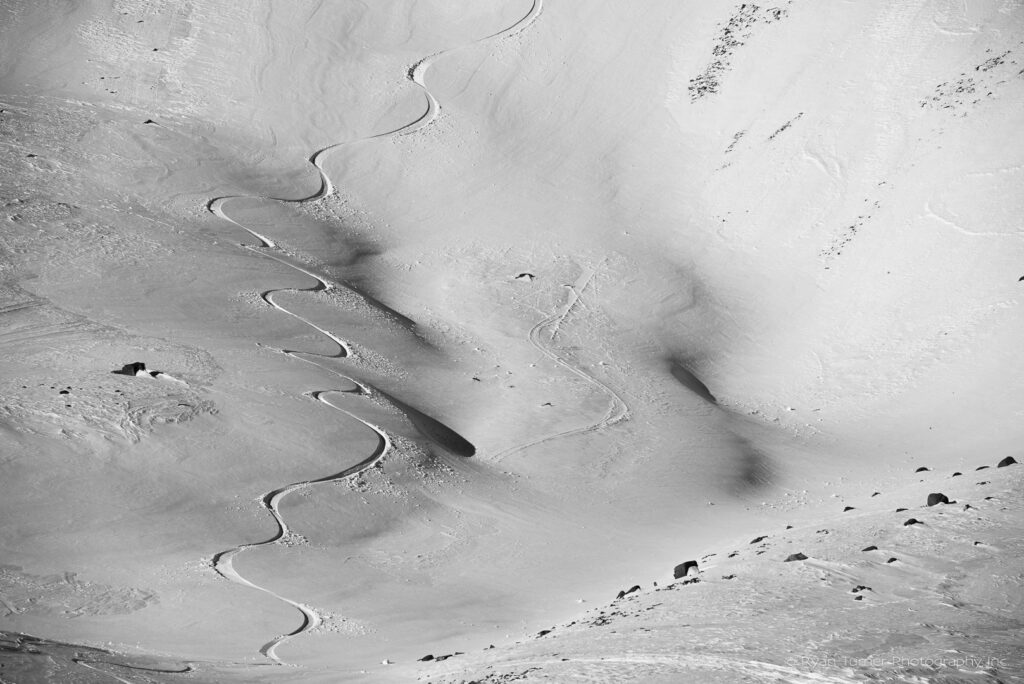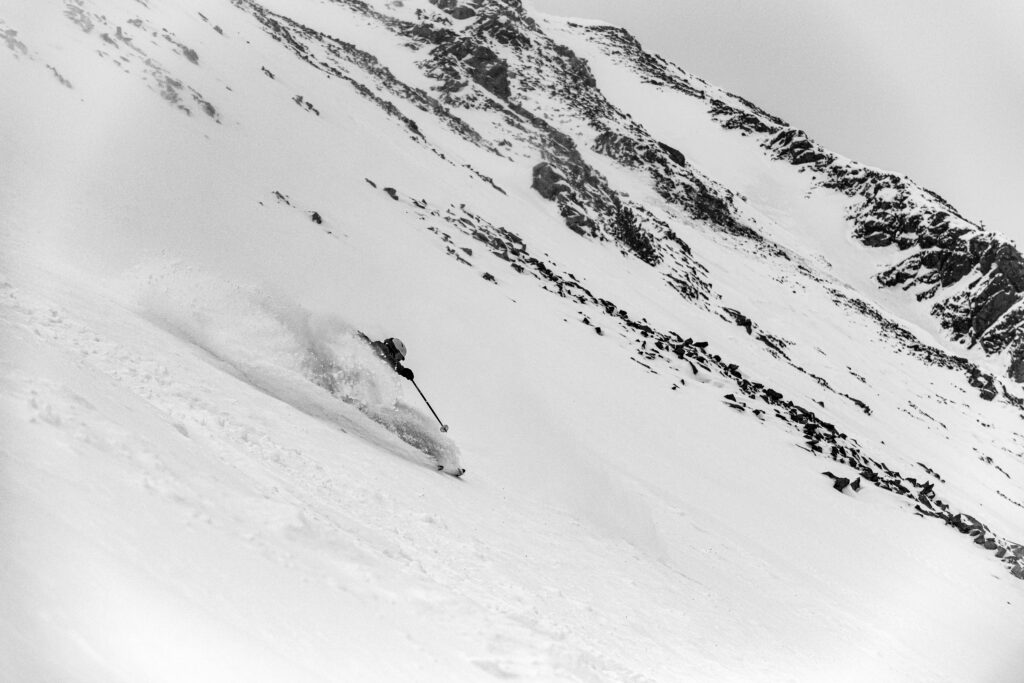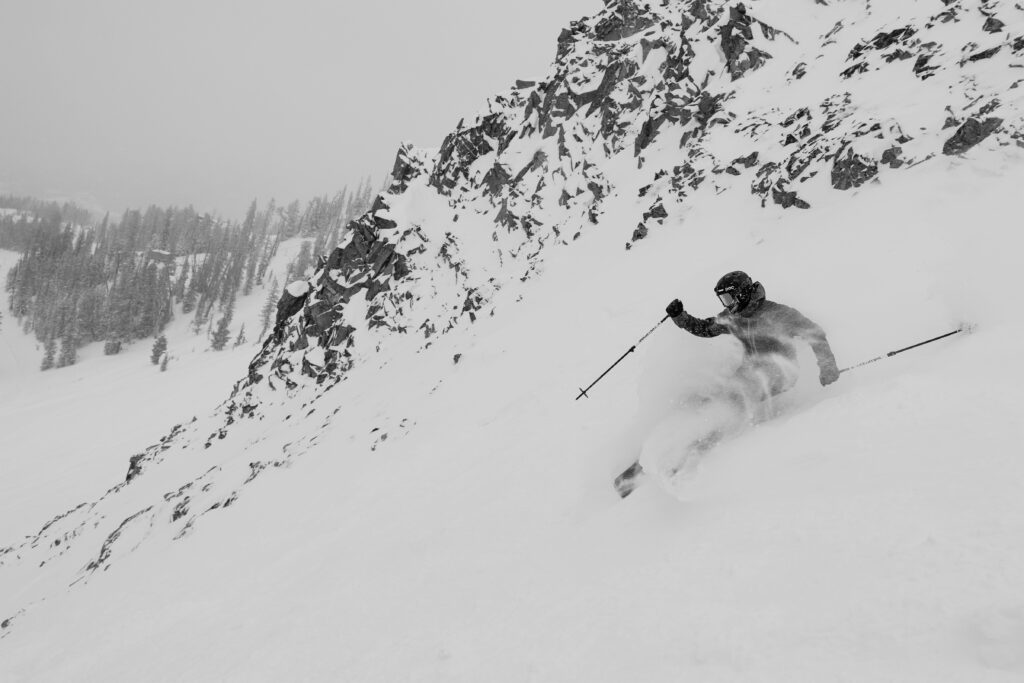Chicken Heads, Dirtbags, and the A to Z of Mooning at Big Sky.
In skiing parlance, those icy snowballs are known as chicken heads, and for the first couple turns down the trail, you’re skiing through them.

Chicken Head Bowl
In skiing, every line has a story behind it. If you’ve ever skied Chicken Head Bowl, you probably have an idea of how it got its name. “When the snowcats groom the road above the bowl, they plow some snow off the side and it creates packed little snowballs that fall into the trail,” says Mike Boutte, Big Sky’s director of snow safety. “In skiing parlance, those icy snowballs are known as chicken heads, and for the first couple turns down the trail, you’re skiing through them.” (Canadian snowcat-skiing guides dub that same debris, “kitty litter.”) Don’t let the name dissuade you from skiing the trail, though. On good days, the chicken heads disappear and the trail opens up into a 35-degree powder run. “It’s a rocky trail in summer,” says Boutte. “So recommend skiing it later in the season after it has filled in.”
Since 1979, ski patrol has hosted the Dirtbag Ball, an all-day, all-night celebration that nominates a Dirtbag King and Queen. The event was originally conceived as a fundraiser to help buy rescue gear for patrol — and pay for the end of season partying.

Dirtbag Wall
In 1995, Big Sky Resort installed the Lone Peak Tram, which gave skiers and snowboarders access to 1,300 acres of high consequence expert terrain on Lone Peak. The resort gave Big Sky employees the honor of naming many of the new runs. “With Dirtbag Wall, we were just kind of like, ‘What are we gonna name that?’” says Boutte. Big Sky has a long history of celebrating dirtbags, another name for “ski bum” or “fun hog.” Since 1979, ski patrol has hosted the Dirtbag Ball, an all-day, all-night celebration that nominates a Dirtbag King and Queen. The event was originally conceived as a fundraiser to help buy rescue gear for patrol—and pay for the end of season partying. In keeping with that tradition, the zone that cuts off from “Tohelluride” became Dirtbag Wall. “It’s great skiing,” says Boutte. “Some of the chutes are 45-degrees and amazing for powder skiing right after a storm.”
They told them to look their way. And when they did, they saw the three patrollers standing near the top of where Three Moons is now located, with their pants pulled down.

Three Moons
If you have an idea of how this trail was named, then for the sake of crude humor, you’ve probably spent a fair amount of time with your pants down around your knees. Accessing Three Moons requires a ride up the Challenger chairlift and a 20-minute hike to the top of the trail, which drops in just before the A-Z Chutes. During the 1989/1990 season, three patrollers were hiking out to A-Z Ridge and made a radio call to a group of patrollers who were riding the Challenger chairlift. “They told them to look their way,” says Boutte. “And when they did, they saw the three patrollers, who were standing near the top of where Three Moons is now located, with their pants pulled down. That’s how the trail got its name.” The nearly 40-degree run is south facing, which means it can hold excellent spring corn snow. “And when it fills in on a powder day it’s great, too,” says Boutte.
To view this article in Big Sky Life, click here.
